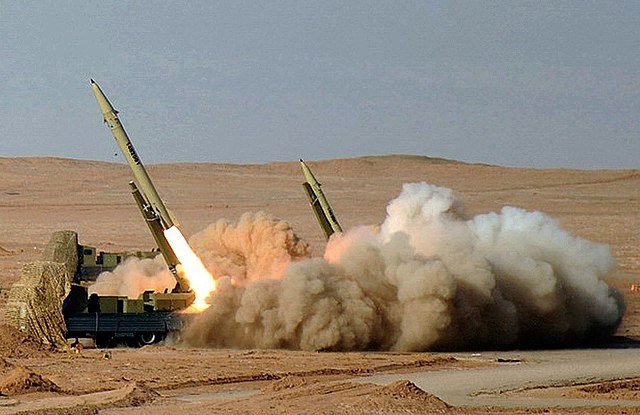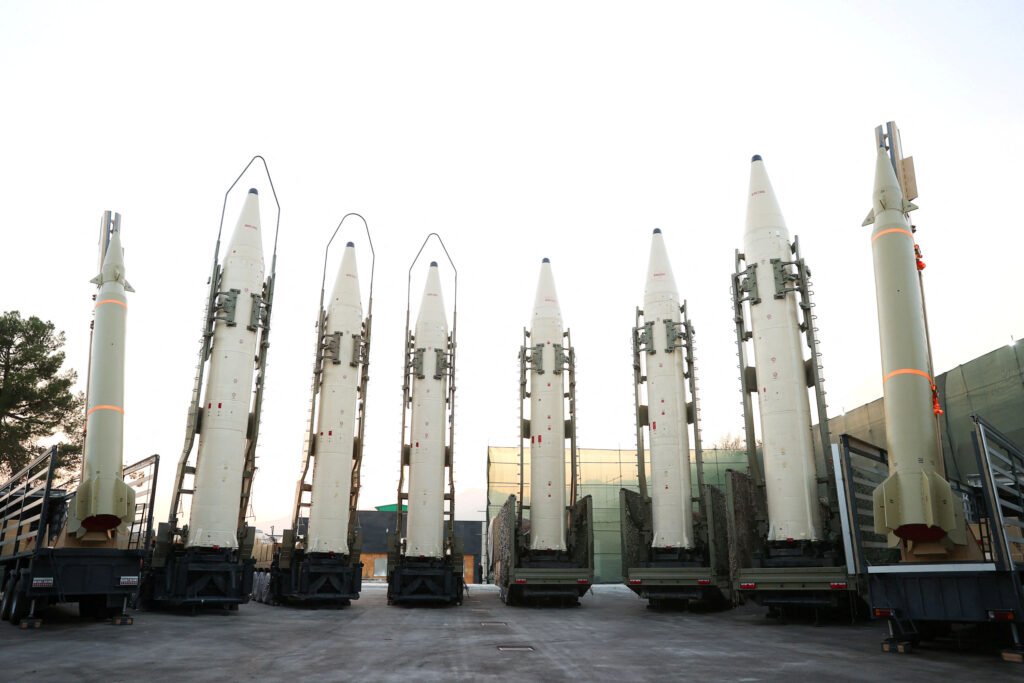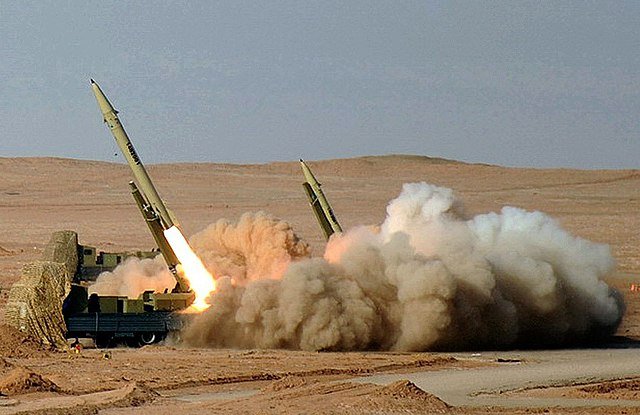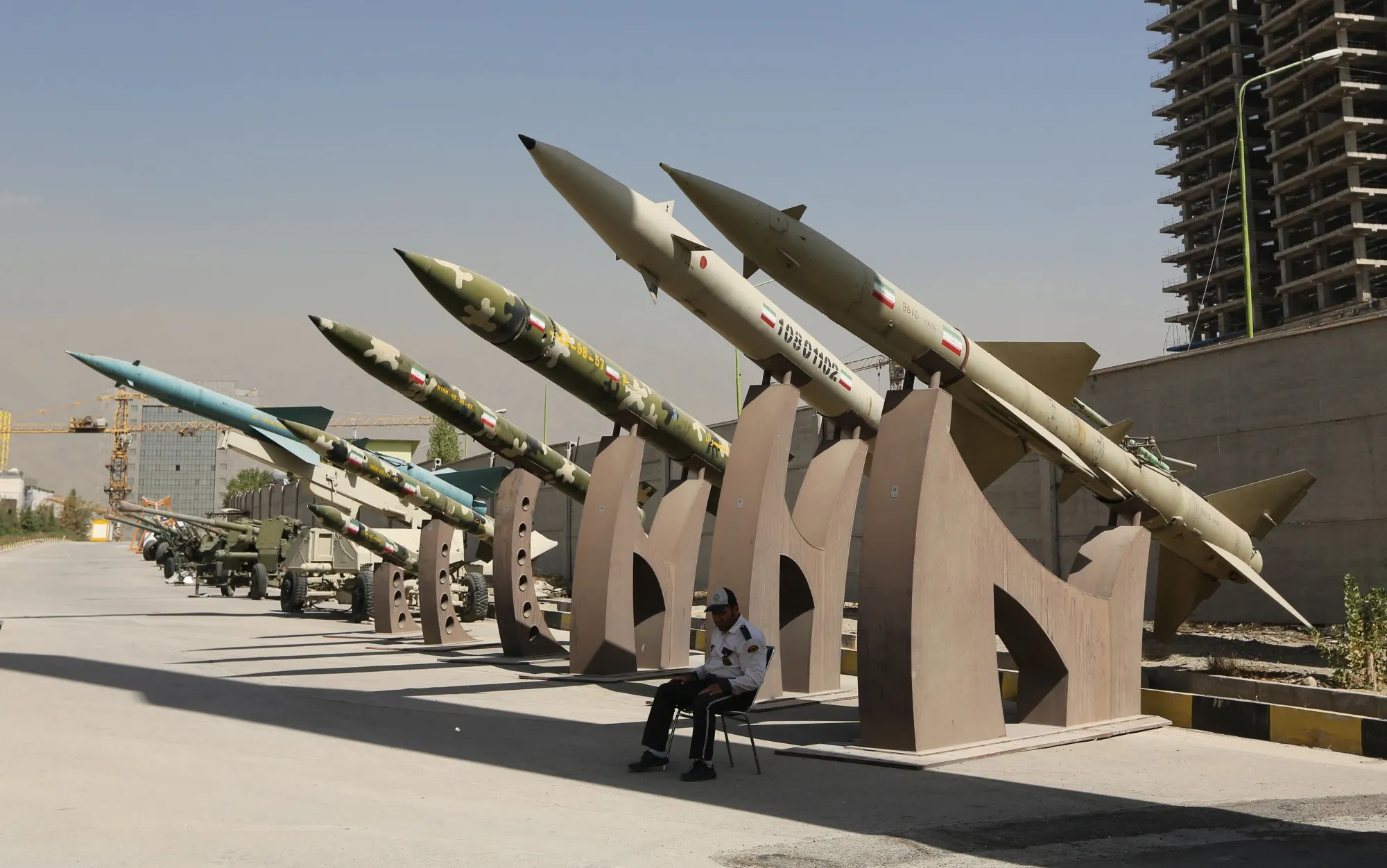
Ballistic missiles are self-propelled weapons that follow a ballistic trajectory to hit their target. That means they launch into the upper atmosphere and then descend under gravity’s pull, like a giant deadly arc through the sky. Depending on range, they are categorized as short-range (SRBM), medium-range (MRBM), intermediate-range (IRBM), or intercontinental (ICBM).
Importance in Modern Warfare
Ballistic missiles are prized for their ability to deliver warheads — conventional or nuclear — over long distances with high speed and relatively low cost compared to air strikes or naval forces.
🛡️ Iran’s Military Strategy and Ballistic Missiles
Defensive Doctrine vs. Offensive Strategy
Iran insists its missile program is defensive, aiming to deter aggression, especially from the U.S., Israel, or Saudi Arabia. But critics argue Iran’s regional missile activities hint at broader ambitions beyond mere defense.
The Role of Deterrence
Iran views ballistic missiles as its trump card — a deterrent against invasion. Unlike air forces or navies, Iran’s missiles are hardened in underground bunkers and can be rapidly deployed.
📜 Historical Background of Iran’s Missile Development

Early Beginnings in the 1980s
Iran’s missile program was born during the brutal Iran-Iraq War (1980–1988). Facing Iraqi missile strikes, Iran sought weapons from abroad, eventually reverse-engineering Soviet and North Korean tech.
Influence of the Iran-Iraq War
That war convinced Tehran of the necessity of a domestic missile capability. Imported Scud-B missiles became the basis for Iran’s Shahab series.
Expansion in the 1990s and 2000s
The 1990s saw a rapid surge in capability, culminating in the Shahab-3, capable of striking targets up to 2,000 km away — far enough to hit Israel.
🛰️ Key Iranian Ballistic Missile Systems
Shahab Series
Shahab-1 and Shahab-2
Based on North Korea’s Scud-B and Scud-C, these short-range missiles were Iran’s first real ballistic platforms.
Shahab-3 and Its Variants
The Shahab-3, with a range of ~2,000 km, is Tehran’s most infamous MRBM. Enhanced variants boast better accuracy, mobility, and survivability.
Sejjil Missile
Sejjil is a solid-fuel, two-stage MRBM with a range comparable to Shahab-3 but faster deployment time and better evasion of missile defenses.
Khorramshahr Missile
One of Iran’s most powerful missiles. With a payload of 1,800 kg and a range of up to 2,000 km, it’s rumored to have the capacity for multiple reentry vehicles.
Fateh Series
These are precision-guided SRBMs with impressive accuracy. Some variants like the Fateh-313 and Zolfaghar have GPS-guidance capabilities.
🏭 Iran’s Missile Production Capabilities

Indigenous Technology and Reverse Engineering
Iran has mastered reverse engineering — taking apart foreign missiles and building new systems. Despite sanctions, Iran claims 90% of components are domestically produced.
Underground Missile Cities
Iran has built massive underground missile bases, hidden from satellites and immune to aerial attacks. These “missile cities” store, manufacture, and launch missiles in secret.
💥 Iran’s Missile Testing and Launches
Frequency and Location of Tests
Iran frequently conducts missile launches, both as technical tests and political statements. Many take place in desert regions like Semnan or near the Persian Gulf.
Messaging Behind the Tests
Missile tests often coincide with international tensions. Whether it’s after a U.S. drone strike or a UN resolution, Iran’s launches send a clear message: “We’re ready.”
🌍 International Reactions and Sanctions
United Nations and Missile-Related Resolutions
UN Security Council Resolution 2231 (linked to the JCPOA) “calls upon” Iran to refrain from developing missiles capable of delivering nuclear weapons — a gray area Iran exploits.
U.S. and EU Sanctions
The U.S. and EU have imposed layers of sanctions targeting Iran’s missile industry, suppliers, and scientists. These include freezing assets and banning international cooperation.
⚠️ Impact on Regional Security
Israel’s Security Concerns
Israel sees Iran’s missiles as an existential threat. With missiles capable of reaching Tel Aviv, Israel maintains its Iron Dome and Arrow defense systems in high alert.
Saudi Arabia and Gulf States
Iranian missiles have struck Saudi oil facilities via proxies like the Houthis. The Gulf nations have responded with U.S. arms deals and missile defense upgrades.
U.S. Military Presence in the Region
With thousands of troops in the Middle East, the U.S. keeps Patriot and THAAD missile defense systems deployed — just in case Iran’s arsenal gets active.
🧨 Missile Proliferation and Iran’s Regional Allies
Hezbollah in Lebanon
Iran provides Hezbollah with missiles and tech. This gives Tehran a “second-strike” option if it’s attacked, through a proxy capable of targeting Israel.
Houthi Rebels in Yemen
Houthi forces have used Iranian-designed missiles against Saudi Arabia and the UAE, showcasing Iran’s reach through regional actors.
☢️ Iran’s Nuclear Program and Missile Synergy
Delivery Capabilities for Nuclear Warheads
While Iran denies it’s building nukes, its missile program clearly aligns with possible nuclear delivery methods — raising red flags globally.
JCPOA and Missile Limitations
The 2015 nuclear deal focused more on uranium enrichment than missiles. Critics say this was a huge loophole, allowing Iran to advance its delivery systems unchecked.
🎯 Advancements in Missile Accuracy and Range
Maneuverable Reentry Vehicles (MaRVs)
Iran is reportedly developing MaRVs — warheads that can change course midflight to evade defenses, making them far deadlier.
GPS and Satellite Navigation Enhancements
Guidance tech has improved. Iran now claims CEP (circular error probability) of under 10 meters on some missiles — that’s a game-changer for accuracy.
🚀 Future Projections and Military Aspirations
Hypersonic Missile Development
Iran claims to be working on hypersonic missiles — those that travel at Mach 5+. This could outpace all current defense systems if true.
Satellite-Launch Capability
Iran’s space program doubles as a missile platform. Launching satellites proves it has ICBM-grade propulsion — a red line for many global powers.
🌐 Global Diplomatic Challenges
U.S.-Iran Negotiation Barriers
Talks keep breaking down over the missile issue. Iran won’t compromise on what it calls its “red line,” while the U.S. insists it’s non-negotiable.
Role of China, Russia, and Europe
Russia and China support Iran diplomatically, while Europe walks a tightrope — wanting diplomacy but fearing escalation.
📝 Conclusion
Iran’s ballistic missile program is more than just military hardware. It’s a symbol of national pride, a tool of regional power, and a thorn in the side of global diplomacy. Whether as a shield or a sword, Iran’s missile arsenal is here to stay — growing more advanced and more controversial by the day.
❓FAQs
Q1: Why is Iran focusing so much on ballistic missiles?
Iran sees them as a cost-effective way to deter larger enemies like the U.S. or Israel without needing nukes or air superiority.
Q2: Can Iran’s missiles reach the United States?
Not yet. Most Iranian missiles are medium-range. But advancements in satellite launch tech could someday enable ICBM development.
Q3: Is Iran’s missile program legal under international law?
It exists in a gray area. UN Resolution 2231 “calls upon” Iran to stop missile development — but doesn’t outright ban it.
Q4: Who helps Iran build its missiles?
Historically, North Korea and China have provided assistance. Today, Iran boasts self-reliance, though it likely sources tech covertly.
Q5: Could Iran’s missiles carry nuclear warheads?
Technically yes, though Iran denies pursuing nukes. The real concern is the overlap between missile advancements and potential nuclear weaponization.

